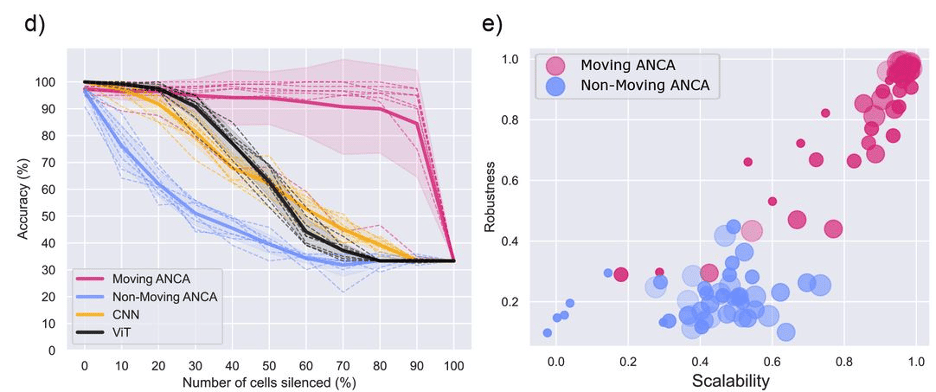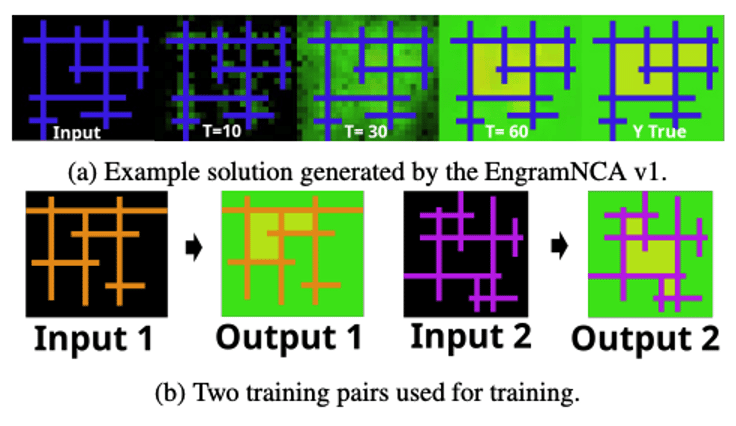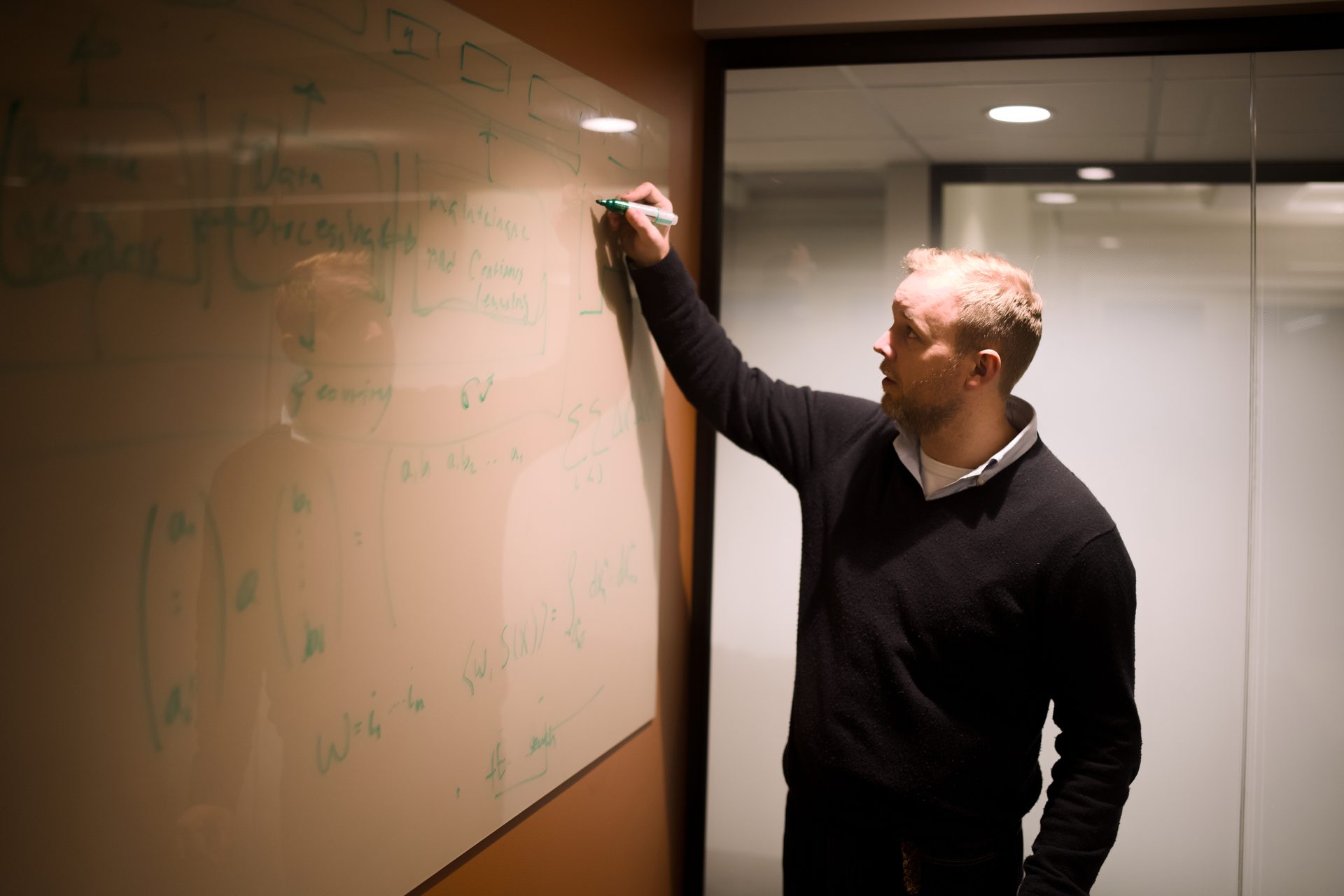
Beyond the Monolith: How Brain-Inspired AI is Building a More Reliable and Sustainable Future
November 2025
Research
Read more
At SURE-AI, our mission is to pioneer a new generation of artificial intelligence that is fundamentally more reliable, efficient, and responsible. Today's dominant AI models are powerful, but they are often "brittle"—failing unexpectedly when faced with new or incomplete data. They are also voracious, requiring massive datasets and energy-intensive computation, which poses a significant challenge to sustainable development.
But what if the path to more robust and efficient AI isn't about building bigger, monolithic "brains," but about mimicking how nature itself builds intelligence?
The biological brain is not a single, giant processor. It's a distributed, decentralized system of billions of simple cells that grow, communicate, and self-organize. Inspired by this, researchers are exploring Neural Cellular Automata (NCAs)—AI models composed of a grid of simple "cells," each running the same set of rules and communicating only with its immediate neighbors.
Recent work from researchers in the SURE-AI center, Mikkel Lepperød and co-workers, highlights how this developmental, brain-inspired approach isn't just a theory. It might offer concrete solutions to AI's biggest challenges in reliability and efficiency, directly aligning with SURE-AI's goals for critical fields like climate science and environmental monitoring.
1. Reliability in the Real World: AI That Knows Where to Look and Won't Break
A core challenge for AI in dynamic environments—like monitoring a changing coastline or a financial market—is reliability. What happens when a sensor fails? Or when the environment is full of "noise" and irrelevant data?
A traditional AI model, like a Convolutional Neural Network (CNN), might fail completely. But research on Active Neural Cellular Automata (ANCA) offers a new, neocortex-inspired paradigm. Biological intelligence excels at "active sensing"—we don't just passively receive data; we actively move our eyes to focus on what's important.

The ANCA model is inspired by the whisker barrel cortex of rodents
The ANCA model does just this. It gives the AI "eyes" (or sensors) that can move. The results are transformative:
Emergent Attention: Without being told, the ANCA learns to move its sensors to the most salient parts of an image, just as a human would. It ignores empty space and "noise," making it far more efficient.

The ANCA learns to focus its attention. These heatmaps, colored by beliefs of single cells, show how the AI's sensors move to the most important parts of an object, like the sleeve of a t-shirt or the legs of a pants, while ignoring irrelevant empty space.
Extreme Fault Tolerance: Most impressively, the ANCA demonstrates the reliability SURE-AI strives for. Because it's a decentralized, distributed system, it can withstand catastrophic damage. In testing, the ANCA could maintain over 90% accuracy on a classification task even after 70% of its sensors were destroyed. A traditional convolutional neural network (CNN) or the more recent visual transformer (ViT) performance, by contrast, drops with significantly less damage.

This graph shows the ANCA's extreme fault tolerance (red line), maintaining high accuracy even when up to 70% of its sensors are silenced. Traditional models like CNNs (blue line) and ViTs (black line) fail much more quickly.
This is an example of a reliable, adaptive system. It's an AI that is suited for the real world—for robotics or other sensor systems—and can be trusted to function even when conditions aren't perfect.
2. Efficiency & Adaptability: Solving Complex Problems with 1000x Less Compute
The second major hurdle for sustainable AI is its enormous computational cost. Training large models consumes vast amounts of energy, making them irresponsible from a climate perspective and inaccessible to many researchers.
Here, a different flavor of NCA—the EngramNCA—provides a path forward. This model is inspired by emerging biological evidence that memory isn't just stored in the connections between neurons (synapses), but also inside the cells themselves (intracellularly, perhaps via RNA).
The EngramNCA mimics this by giving each cell both a "public" state that its neighbors can see and a "private" genetic memory that only it can access. This dual-memory system allows for incredible adaptability:
Hierarchical Learning: The EngramNCA can learn to grow simple "primitive" shapes (like a torso, a leg, a tail) and then, in a separate process, learn to combine these stable, pre-learned parts to build a new, complex object, like a lizard. This is an adaptive way to analyze and build complex systems, a key goal in fields like climate science.

The EngramNCA demonstrates hierarchical learning. Starting from just the "torso" primitive (left), the model uses its learned rules to "grow" the rest of the lizard, including its head, legs, and tail, resulting in a complete, stable shape (right).
Groundbreaking Efficiency: The true power of this developmental approach is revealed when applied to one of AI's toughest challenges: the Abstraction and Reasoning Corpus (ARC). ARC consists of "few-shot" reasoning puzzles that humans find easy but have been nearly impossible for AI.

An NCA solving an ARC puzzle. The model takes the input (left) and iteratively "grows" a solution (middle steps) that correctly matches the target pattern (right), demonstrating a form of developmental reasoning.
By training an NCA model on the fly for each new puzzle, this research achieved solve rates comparable to massive models like ChatGPT 4.5. The catch? It did so with a 1000-fold reduction in computational cost (an estimated $0.0004 per task, compared to $0.29 for the large model).
The path to Sustainable AI
This research points to a clear and exciting future. By moving away from brittle, energy-hungry models and toward distributed, developmental systems inspired by the brain, we can achieve many of SURE-AI's core objectives simultaneously.
The ANCA shows us the path to reliable and adaptive AI that can thrive in dynamic, unpredictable environments. The EngramNCA and its application to ARC show us a path to efficient and responsible AI that can learn from limited data.
This is how we build the next generation of artificial intelligence—not just powerful, but sustainable, trustworthy, and truly intelligent.
If you’re curious to dive deeper into the methods and ideas behind this article, check out the three full version articles:
Keep reading
Double-click to select video


Unifying Risk and Belief: A Foundation for Coherent AI Decision-Making
October 2025
Research
Read more
Double-click to select video
En annen sak med en tittel som dette
September 2025
News
Read more
The economics of overlapping generations: a stochastic lens
October 2025
Research
Read more


Beyond the Monolith: How Brain-Inspired AI is Building a More Reliable and Sustainable Future
November 2025
Research
Read more


Signals with shape: why topology matters for modern data?
November 2025
Research
Read more


Why horizon matters more than you think in decision making
November 2025
Research
Read more
Double-click to select video


The economics of overlapping generations: a stochastic lens
October 2025
Research
Read more